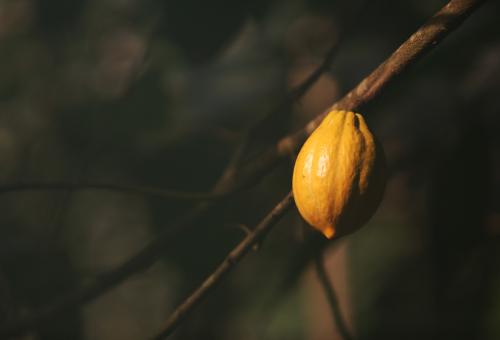Rainforest Biome
Explore our enormous indoor rainforest. Trek through the humid tropics via SE Asia, West Africa and South America.

Also known by its scientific name Theobroma cacao. Theobroma can be translated to 'food of the gods' and for good reason – it's the source of chocolate! You can find cacao pods of many shapes, sizes and colours growing in the Crops section of our Rainforest Biome.
Native to lowland tropical America but now widely cultivated in West Africa. Requires a shady location, humid climate with regular rainfall and good soil.
Today chocolate is the 'sweet snack of the people', but many years ago, as a part of their rituals, Mayan and Aztec nobles drank their cocoa beans ground and brewed with chillies. This is where the Latin name Theobroma, meaning 'food of the gods', comes from. When it first arrived in Spain in the 16th century some didn’t like it, one even proclaiming it ‘fit for pigs’. Sugar was added and it grew in popularity especially with the ladies of the Spanish court. Chocolate became a European luxury, with chocolate houses frequented by the elite springing up in the capital cities. Debates centred around its medicinal value and whether it was it an aphrodisiac. Chocolate went on to be used as emergency rations for armies, navies and rescue teams, and eventually became a ‘luxury’ that everyone could enjoy.






